The muscles, ligaments, and tendons of your ankle joint need a lot of care and training. Especially for trail running, where undulating and uneven paths are your bread and butter.
Strengthening your ankle will improve your foot's upward movement (dorsi-flexion) and downward movement (plantar-flexion), making you a better runner on the whole.
But getting stronger ankles isn't just about increasing your mobility. These exercises are also designed to add stability to your running practice, which will reduce your chances of injury. It's highly likely that, if you only run and never train your ankles, you'll feel weakness set-in far sooner than other runners.
As part of the Run 1000 Miles Challenge, we asked athletics coach John Shepherd to break down everything you need to know about ankle strength, and recommend the best exercises to improve your running.
Why do my ankles feel weak when I run?

Fatigue can push you into a vicious cycle. As your glycogen levels decrease and your feet absorb continuous impact, they become slower to react with changes in the terrain. This means the tendons and ligaments in your ankles aren't performing those fast micro-movements that keep you balanced while running.
This, in turn, puts more and more unnecessary stretching and strain on your ankles. Not only does this hurt, but it also frazzles your proprioceptive system – the system which perceives the position and movement of our body – often leading to slips or awkward ankle rolls.
Does running strengthen weak ankles?
Running can strengthen weak ankles, but not on its own. While running will definitely increase your cardiovascular fitness and lower body strength, it doesn't specifically target the muscles in your ankle. To strengthen weak ankles, you need to practice specific exercises which put (a safe amount of) load on the joint and condition it.
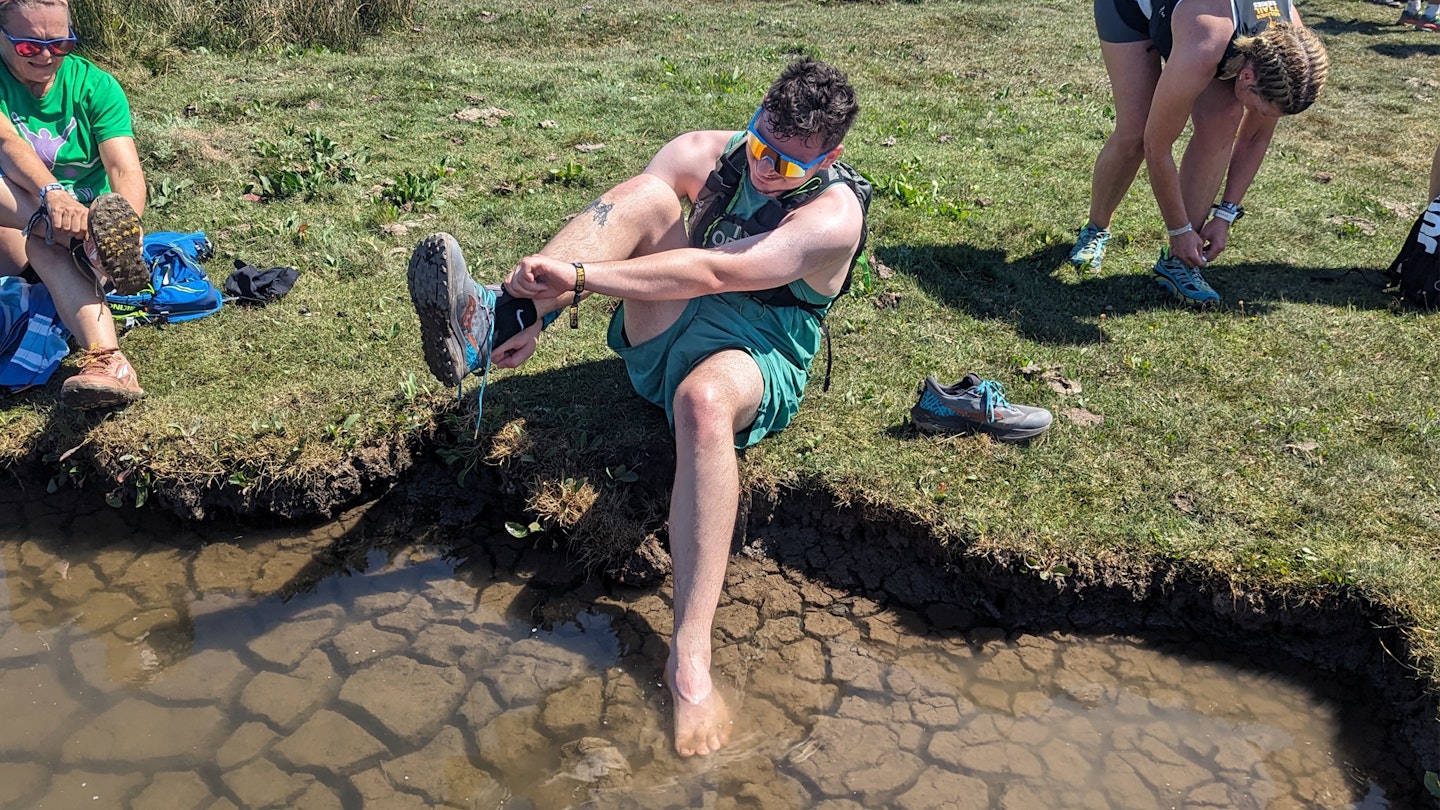
Flexibility and responsiveness also fall under the umbrella of 'strength' when it comes to your ankles. Purely building muscle isn't going to be much help when you hit the trails.
What exercises strengthen weak ankles?
The best exercises to get strong ankles as a runner are ones that improve your eccentric ability. Eccentric muscular actions are the stretches that occur in the thighs and ankles when running downhill or fast across uneven terrain, as your lower limbs have to constantly tap the breaks to keep you steady, which means absorbing a lot of impact.
For this article, we've recommended eight exercises that will strengthen your ankles and give you better control on the trail. Working these will help to prevent injury and boost your performance to the next level.
1. Throw and catch a medicine ball on one leg

Purpose: Develops ankle, knee and hip stability and control. It also benefits core muscles.
How to: Stand on one leg, holding the foot of the raised leg a couple of cms from the floor. Have a partner throw a light to medium weight med ball (2-5kg) to you from about two metres away, and then from both sides. Catch the ball and control the momentum that will be generated through your body.
Try to avoid wobbling too much or placing your raised foot back on the floor. Throw the ball back to your partner and repeat. No partner? Throw the ball against a wall and catch the return.
Exercise: 20 reps of throws from the front, 2 x 10 reps with your standing leg furthest from the direction of throw, and 2 x 10 with your standing leg nearest to the direction of throw.
2. Lateral shuffle
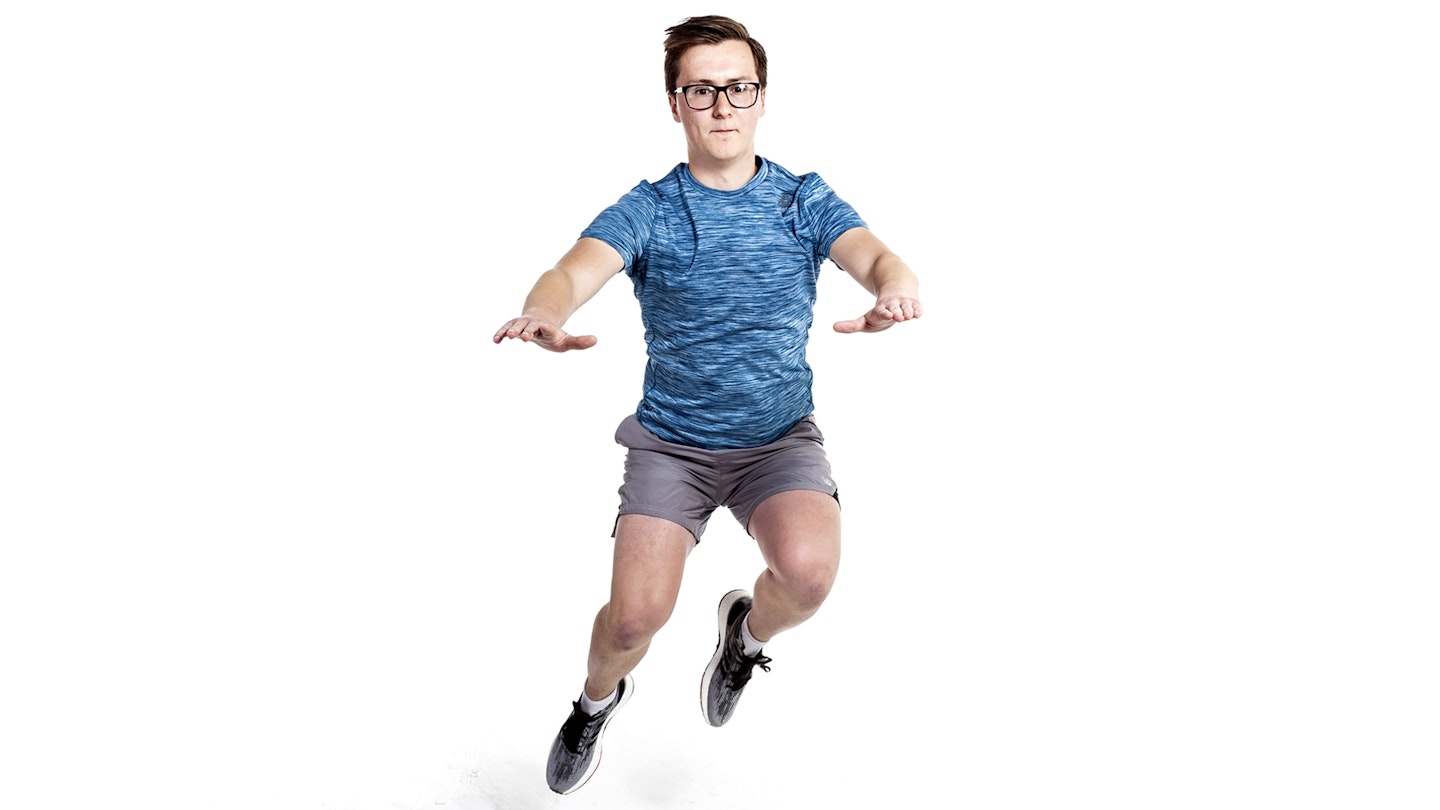
Purpose: to develop ankle (and hip) movement, control, and agility.
How to: Stand with your feet just beyond shoulder width and drop down into a squat. Lift your arms up so they are parallel to the ground. Initiate sideways movements by skipping side to side from your forefeet, taking reasonably long steps and generating some discernible height. For greater effort increase the sideways jump. This introduces a higher braking element when you transition from one direction to the other.
Exercise: 4 x 10 reps to the left and 4 reps to the right.
3. Triangle hop
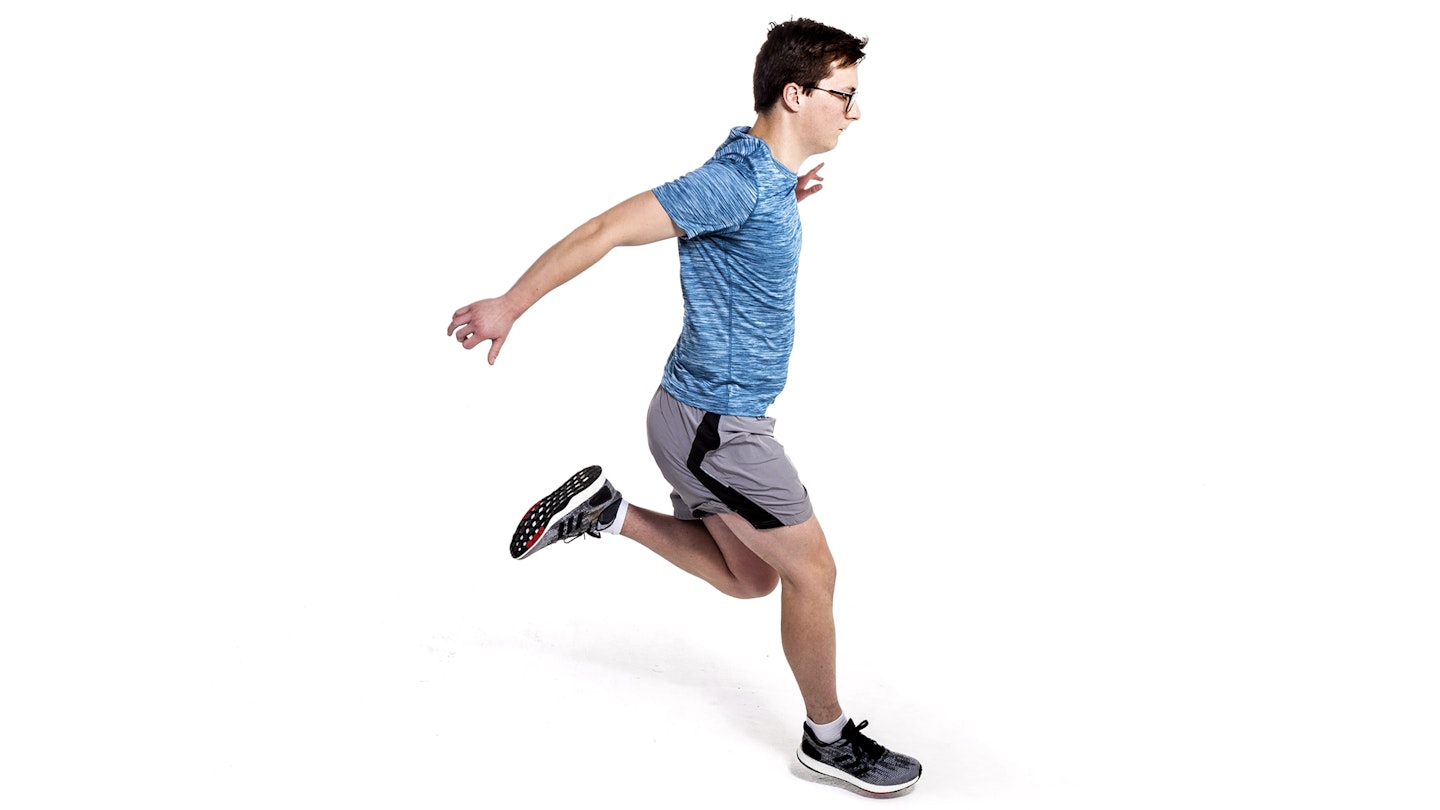
Purpose: builds ankle stability, strength, and control.
How to: stand on your right leg. Hop about 75cm forwards and then immediately straight across to the left, about the same distance. Then immediately on landing hop back to your starting position. Basically you’re hopping a right angle triangle pattern. Keep your torso as upright as you can and make your landings on your forefoot.
Exercise: 6 triangles on each leg.
4. Hop and hold
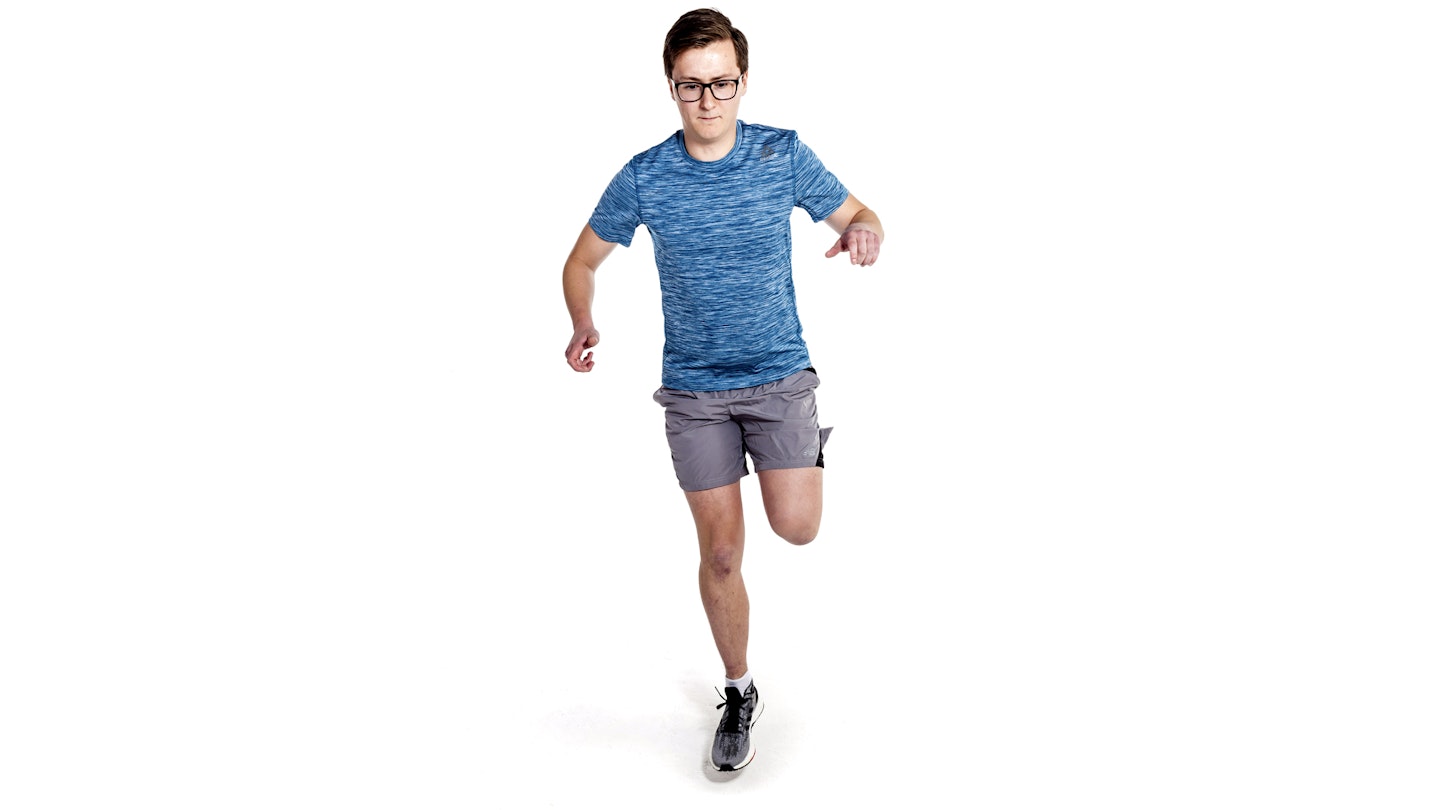
Purpose: develops ankle strength and deceleration/stopping power.
How to: hop forward about a metre, landing with your knee slightly flexed. Try to stop without moving forward. Hold for three seconds then swing your non-supported leg powerfully forward, swinging your arms for extra force, and move into another hop on the other leg. Land and hold again, then repeat. You can use your arms for balance.
Exercise: 3 x 10 reps
5. Zig-zag strides
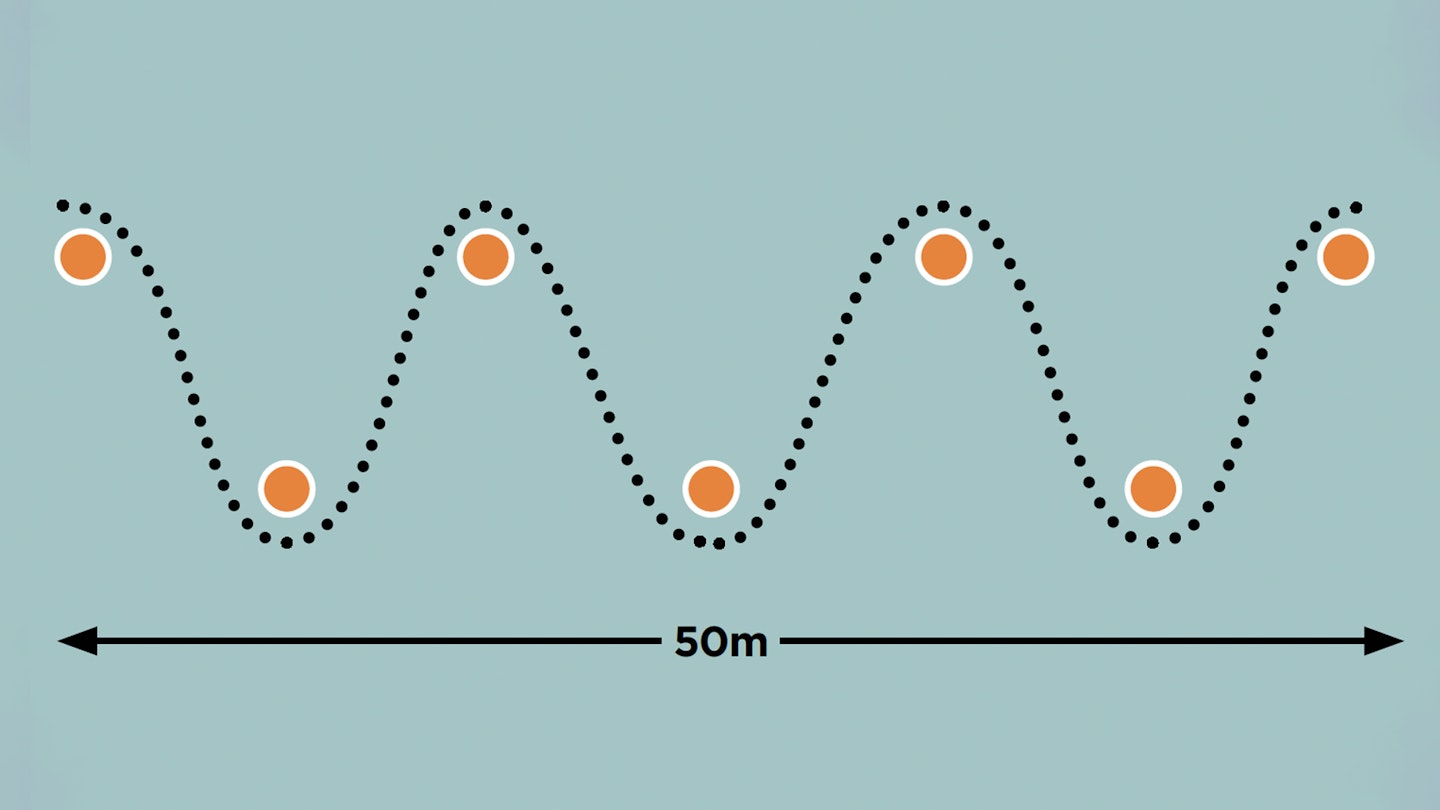
Purpose: to develop body control under angular forces at speed. This also promotes proprioception across whole body.
How to: run over 50m, zig-zagging in sweeping but tight arcs across the centre of the path of your direction. You will need to lean in through your body to create comfortable curving runs. The curves will create forces across the entire body. The ankle develops greater stability and strength In order to control these.
Tip If you’re out on a run and spot a football or rugby pitch use its lines to zig-zag across.
Exercise: 4 x 50m.
6. Eccentric calf raises
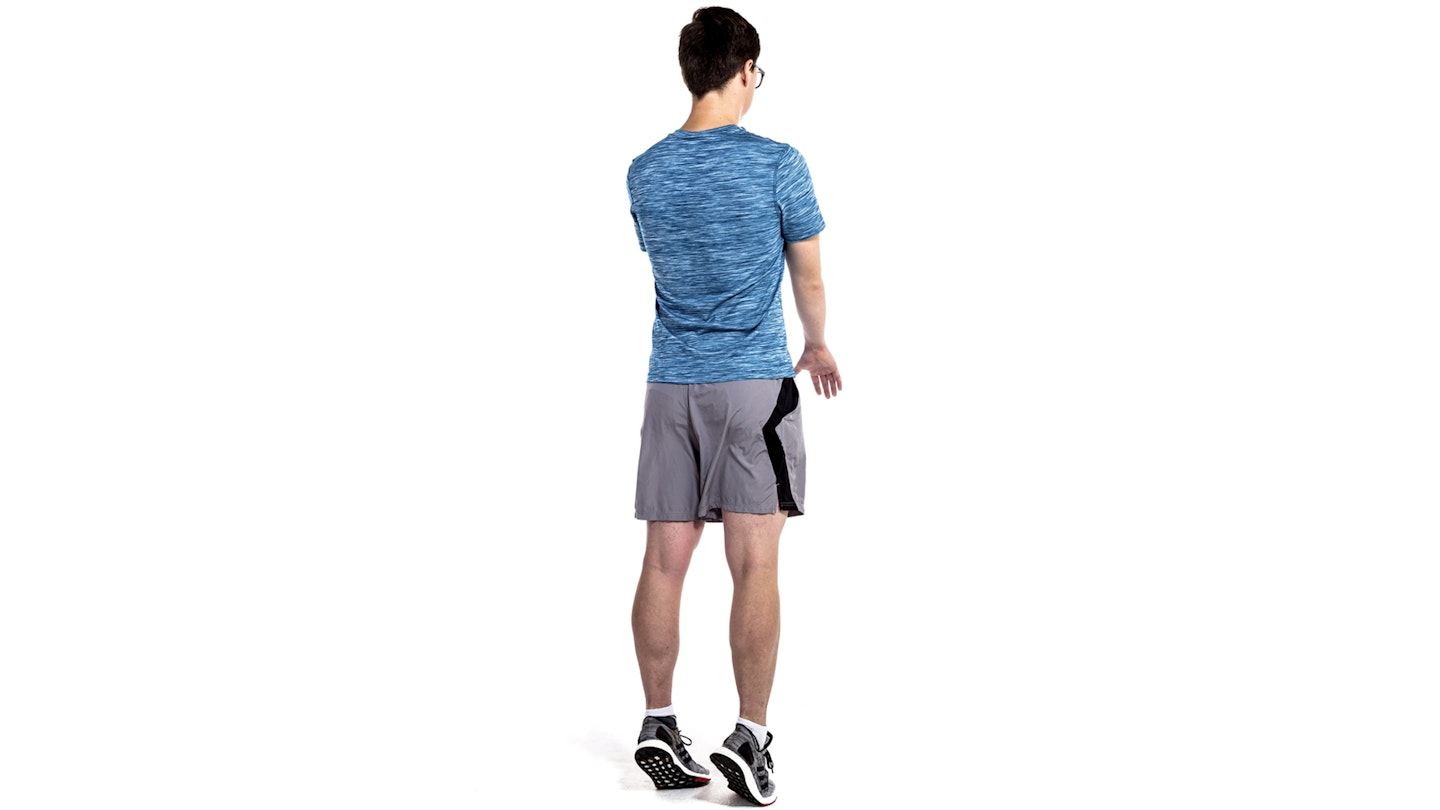
Purpose: to bolster Achilles tendon and calf muscles strength.
How to: with feet hip-width apart, rise on to your tiptoes. Lower heels to a slow count to five. Let your heels touch the ground then rise up onto toes again immediately. The key phase is the eccentric one – the lowering part – when the tendon and muscles lengthen to control the downward path and weight of your body.
To increase the stretch can perform the exercise over a step and when lowering let your heel travel a few centimetres below the step.
Variations: progress to raising both feet and lowering on one, and then to doing the exercise on one foot only. You can also add weight, with dumbbells at an arms’ length.
Exercise: 4 x 10, adding the exercise variations as strength builds.
7. Single leg Romanian deadlift
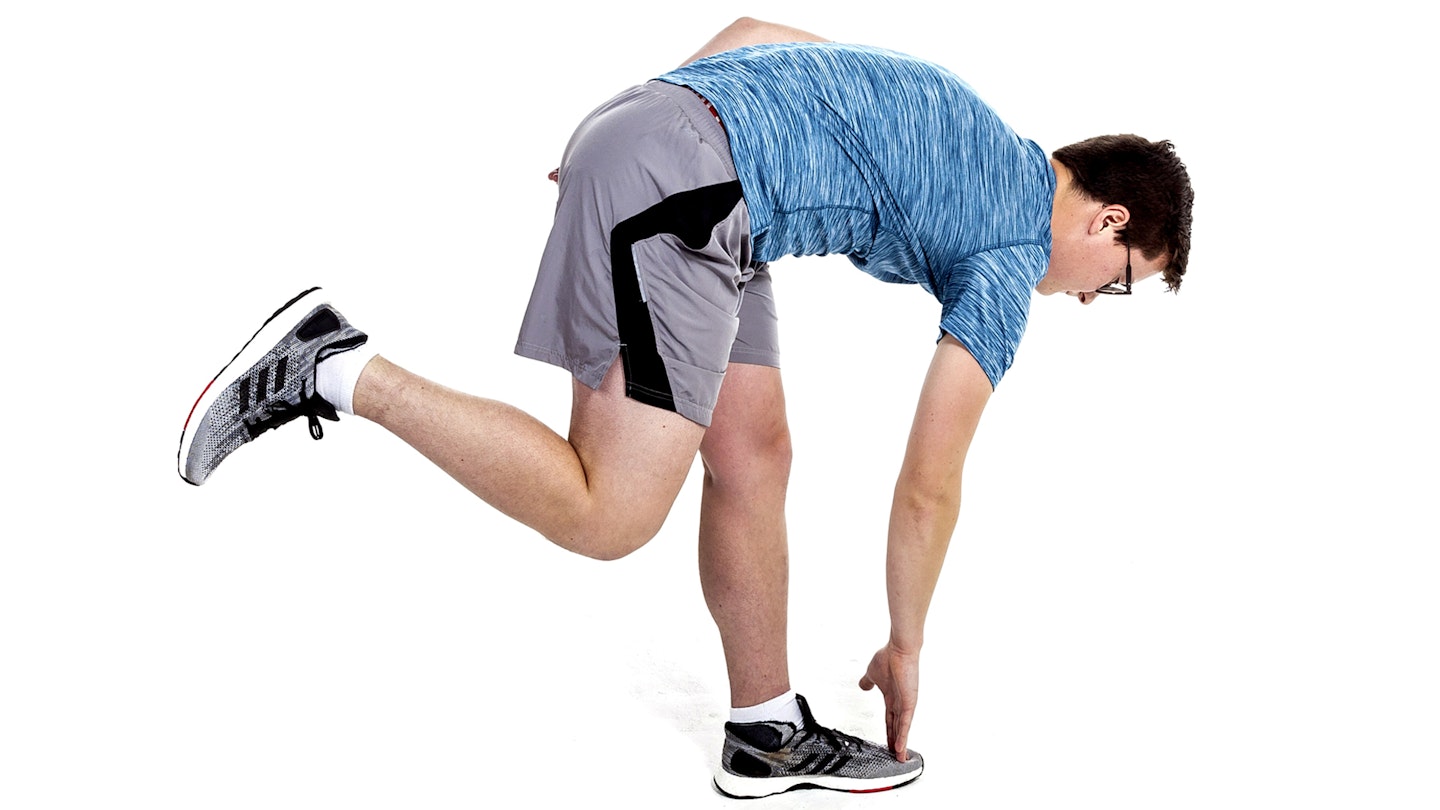
Purpose: increase ankle control, strength, proprioception.
How to: stand on one leg and lift the other leg so thigh is parallel to the ground. Raise the arm on that side so that it is fully extended. Look straight ahead. Reach that arm down and across your body so that hand touches the top of grounded foot. You’ll need to bend at the waist to do this. Pull torso back to upright and return to the starting position.
For extra stability remove shoes and grip the floor with the toes. Doing this will also help to strengthen the feet. Push your unsupported leg back and forward from the hip to initiate the pivoting movement required. To level up the exercise, use a kettlebell in the outstretched hand.
Exercise: 4 x 8 on each leg
8. Run over uneven ground
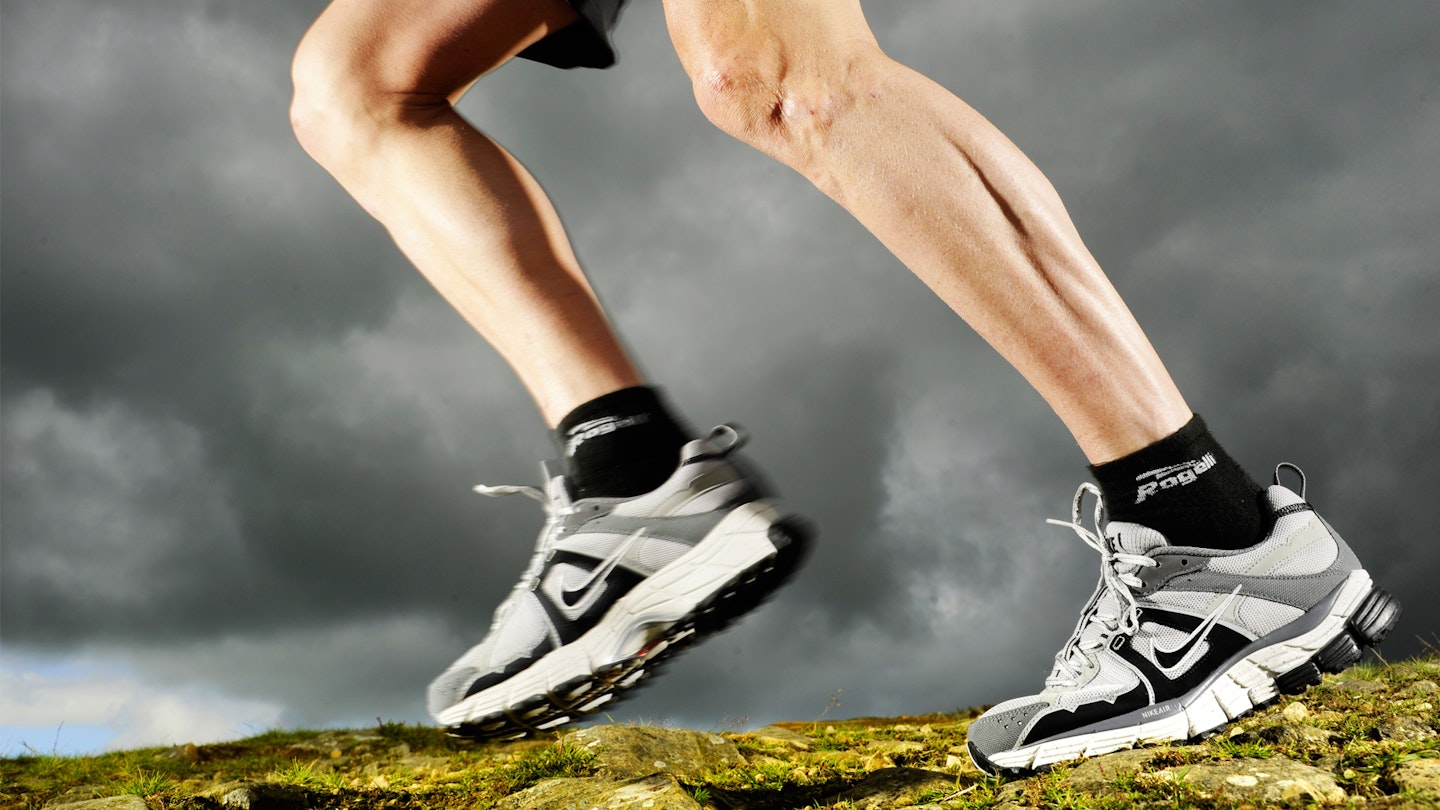
Finally, put it all into practice and treat yourself to a run over uneven ground that you would never even venture on to before. It’ll work on mobility, build core strength and help your focus. Perfect!
For all the latest news, tips and gear reviews, sign up to the Trail Running Newsletter.
Don't forget to subscribe to the Trail Running Newsletter to get expert advice and inspiration delivered to your inbox.
This article is brought to you by the official Trail Running Run 1000 Miles Challenge.

